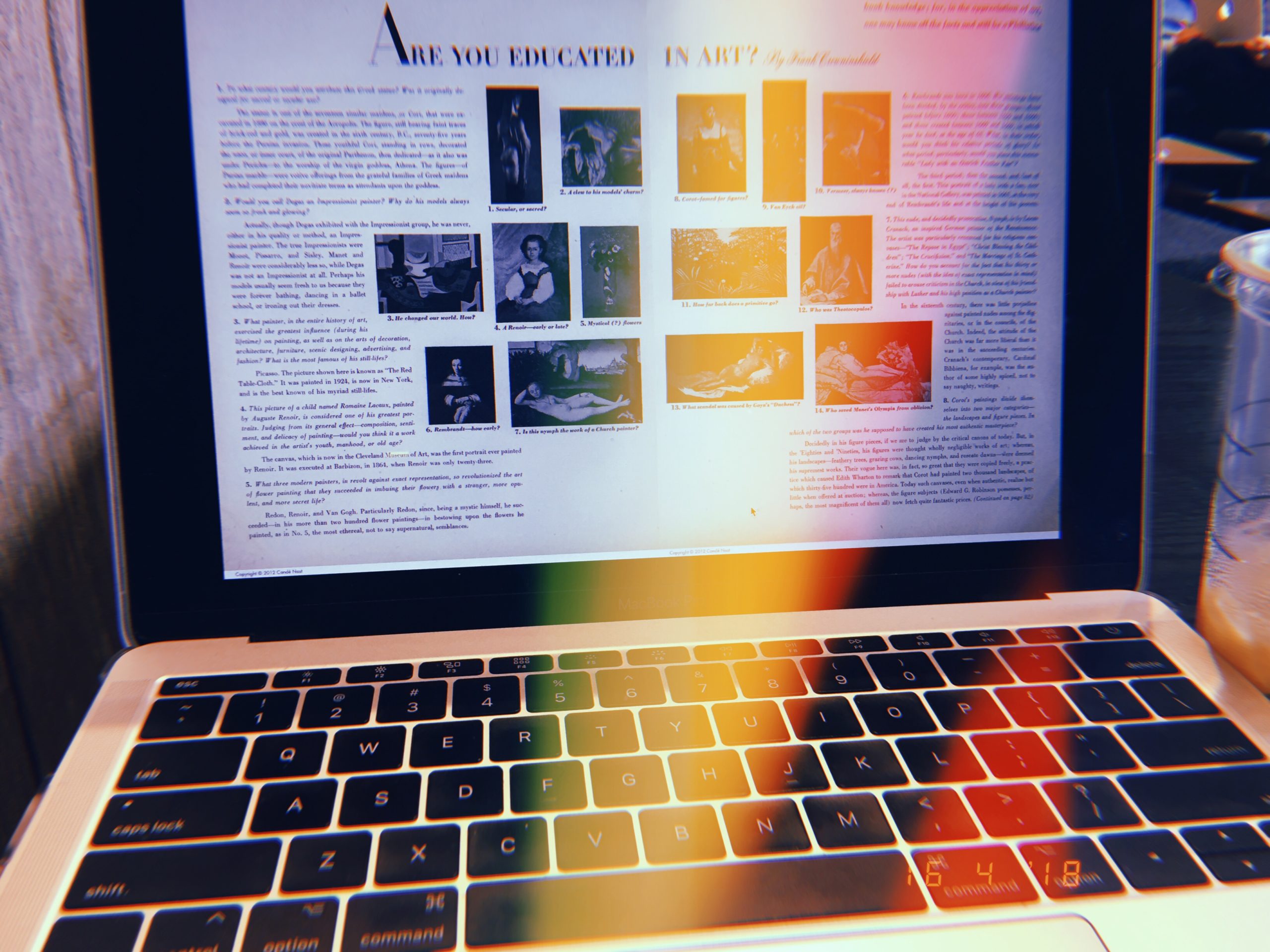The other night my dissertation research had me searching through Vogue’s 1944 issues and while I didn’t find what I was looking for, I did come across an article that stopped me in my tracks. As an (aspiring?) art historian, the editorial titled “Are You Educated in Art?” in the January 1, 1944 edition of Vogue caught my attention. In this two-page spread art critic Frank Crowninshield instructs the reader about Western art history in the form of fourteen questions. Crowninshield provides answers to various questions ranging from the use of archaic Greek statuary to the influence of Picasso.
Although this questionnaire comes across as an art history pop-quiz, the text insists that it “has little more to do with your discernment and taste than with your study-book knowledge; for, in the appreciation of art, one may know all the facts and still be a Philistine.” The use of the word “taste” here is integral to the reader’s reception of this article. IAntje Krause-Wahl describes that in this period, “Vogue increasingly saw it as its responsibility to guide their readers in the principles of good taste. Jessica Daves, who in 1952 followed Edna Woolman Chase as editor-in-chief, explicitly formulated this when she described the magazine as a ‘vehicle to educate the public taste.’”
The use of art and the acquisition of art historical discernment played an integral role in Vogue’s discourse on how to obtain taste. Later, in July 1945 Vogue even devoted an entire issue to the Museum of Modern Art which featured Marcel Duchamp’s “The Large Glass” on the cover. Thus, the 1940s Vogue reader not only knows the latest fashions but she also acquires other skills crucial to being an ideal society lady such as knowledge of art history and an interest in modern art. Indeed, women’s magazines such as Vogue act as “instruction manuals” of femininity. This direct appeal to its reader to cultivate their taste and learn how to properly appreciate art, provides an excellent example of the way in which fashion magazines work to construct femininity and teach artistic literacy.
By Abby Fogle
Sources:
Craik, Jennifer. The Face of Fashion: Cultural Studies in Fashion. London: Routledge (1994), 47.
Crowninshield, Frank. “Features/Articles/People: Are You Educated in Art?” Vogue 103, no. 1 (1944): 48-49, https://search.proquest.com/docview/879229981?accountid=10277.
Krause-Wahl, Antje. “American Fashion and European Art—Alexander Liberman and the Politics of Taste in Vogue of the 1950s” in the Journal of Design History Vol. 28, No. 1. (2015). doi:10.1093/jdh/epu041.


